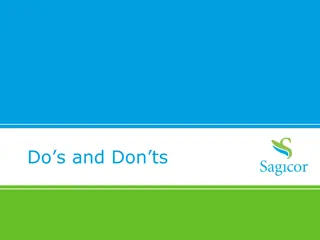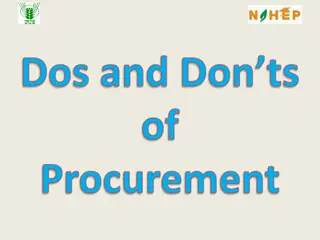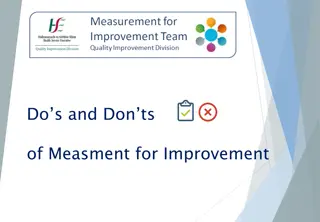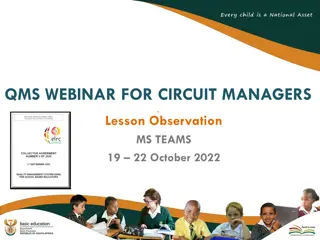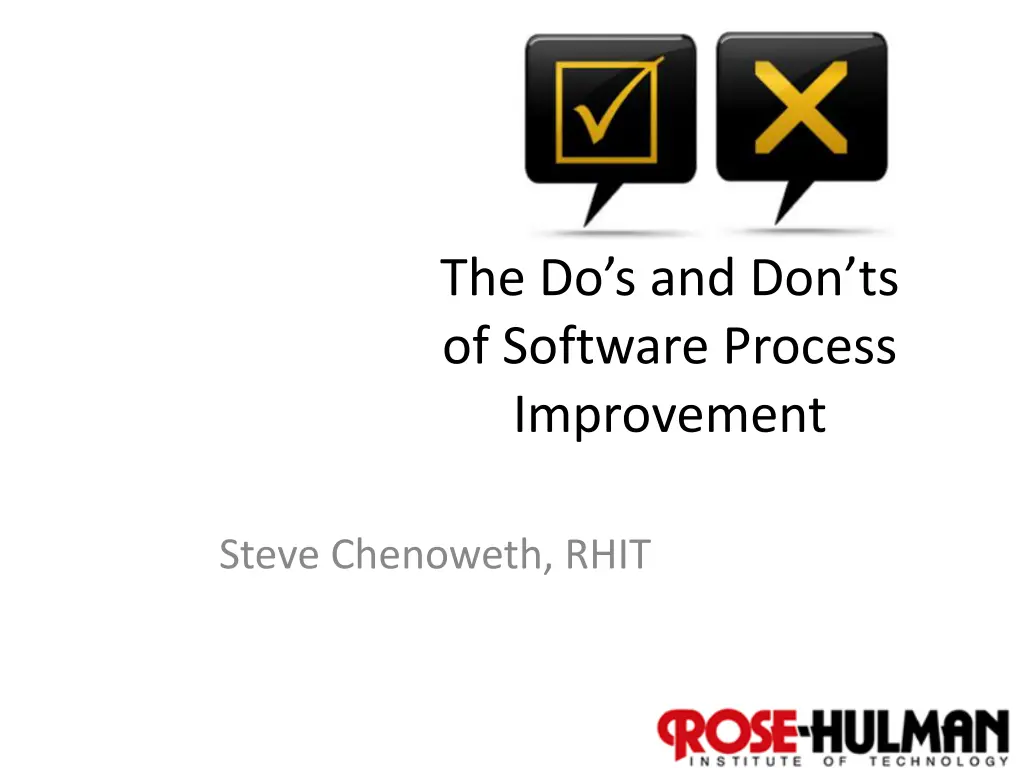
Software Process Improvement Essentials
Explore the relationship between process quality and product quality, understand CMMI approaches, and learn about process areas and assessment methods in software process improvement.
Uploaded on | 3 Views
Download Presentation

Please find below an Image/Link to download the presentation.
The content on the website is provided AS IS for your information and personal use only. It may not be sold, licensed, or shared on other websites without obtaining consent from the author. If you encounter any issues during the download, it is possible that the publisher has removed the file from their server.
You are allowed to download the files provided on this website for personal or commercial use, subject to the condition that they are used lawfully. All files are the property of their respective owners.
The content on the website is provided AS IS for your information and personal use only. It may not be sold, licensed, or shared on other websites without obtaining consent from the author.
E N D
Presentation Transcript
The Dos and Donts of Software Process Improvement Steve Chenoweth, RHIT 1
Describes the CMMI approach Is there a relationship between quality of processes and quality of products produced? The whole quality movement (TQM) is based on this notion. Key thing it has a lot of pieces to deal with. Like how do you control suppliers with supply chain management? Or, How do you manage customer expectations through support and marketing? 2
CMM and CMMI are Models Describe generally how processes should work. Need an interpretation or implementation by a particular organization. E.g., if you want to be agile, they will look a lot different! See Jeff Sutherland s blog, for example. Goal should be the improved results, not achieving a certain CMM level. 3
Improvements focus on process areas Requirements management Project planning Project monitoring and control Supplier agreement management Measurement and analysis Process and product quality assurance Configuration management 5
Whats the assessment process? Done by someone authorized, using a standardized assessment method. SCAMPI v 1.1 enables: Gain insight into an org s engineering capability Relate to the CMMI model Prioritize improvement plans Focus on improvements, given current level Derive capability level ratings and a maturity level rating Identify development/acquisition risks relative to these 6
Assessment team compares implementation to levels in the model Fully implemented? Largely implemented? Partially implemented? Not implemented? Then they generate their findings. 7
The two CMMI level representations Staged levels Software engineering Continuous levels Systems engineering But, the goal is to improve the processes, whichever rating scheme you use. E.g., you may have developed all the process tools, but can t get your teams to use them! 8
Orgs get into this to first develop a baseline Desired outcomes might be to improve: Delivered quality Productivity Schedule Reduced overtime Defect injection rate In-process defect removal efficiency Defect distribution 9
Faster / cheaper / better? CMM people disagree it s Pick any two! They say, Pick any one! Create an SEPG (Software Engineering Process Group), and start by asking senior management questions like: What is the business imperative in our marketplace? What gives us a competitive edge? Why do customers buy from competitors? Management needs to set these priorities. 10
Level 2 = Managed Beyond everyone work harder or longer . Use science to reduce cycle time. Reduce time to delivery. Not circumvent existing processes and standards. Avoid the ritualistic dance. Game playing with the customers, about delivery dates and what they ll get. Need estimates you can believe in. 11
How to achieve? 1. Gather and analyze historical data To develop and calibrate estimation models. 2. Codify good engineering and management practices that lead to more reliable results. 3. Establish the means to control the product s requirements and configuration baselines. What are you building? 4. Enjoy the strong support of leadership in achieving this goal. 12
Keep it simple Checklists Assume people know their jobs Address exceptions with training Different from standard reference docs Think How do I make this agile? 13
Measuring the value Need data to support benefits of process improvement. Field-reported defects Cost variance Schedule variance Functional variance 15
Measuring process adoption Pilot projects vs broad deployment and implementation. Can t use the Field of dreams approach. Process releases to change things. Monitor adoption rates. How many projects should be using ? Here they come, now. 16
Measuring compliance vs SQA group leads in verifying this, too. Do activities and work products both conform to designated standards and requirements? Good place to use checklists. E.g., about how code inspections are done. 17
This is culture change Culture = Rituals (formalities, rules, new traditions) Ceremonies Artifacts Symbols So, do stuff, like a celebration! Geeks celebrating from film school rejects website. 18
Detractors Software developers mostly don t like process. Process feels like a detraction. Jacobson recently noted that software creation is increasingly perceived as an art, not engineering. CMMI, for example, doesn t guarantee product success. Defining processes around tools is a mistake. Is customer-enforced compliance a good thing? Is quality of deliverables the same as achieving business goals? 19

